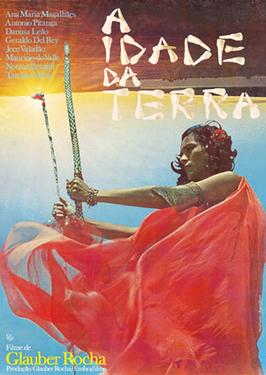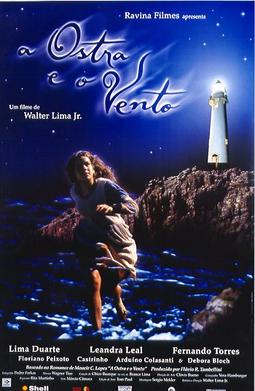
Criciúma is a city in the Brazilian state of Santa Catarina. At 28°40′39″S49°22′11″W, it is located 180 km south of Florianópolis, the state capital and around 900 km south of São Paulo. The city is the center of Brazil's flooring and home materials industry, and is the second-largest such center in the world.

Damolândia is a municipality in central Goiás state, Brazil.
Nova Veneza can refer to two towns in Brazil:

Nova Veneza is a municipality in central Goiás state, Brazil.

Estádio Onésio Brasileiro Alvarenga, also known as Estádio Vila Nova, or Estádio OBA, is a multi-use stadium located in Centro neighborhood, Goiânia, Brazil. It is used mostly for football matches and hosts the home matches of Vila Nova Futebol Clube. The stadium has a maximum capacity of 11,788 people.
Içara is a city in the Brazilian state of Santa Catarina. It is located 170 km south of Florianópolis, the state capital and around 890 km south of São Paulo. It is the Brazilian capital of the honey and tobacco industries, but is also very strong in plastic, ceramic tiles and chemicals.
Guanay is a small town on the Tipuani River in the Yungas region of Bolivia. It is the seat of the Guanay Municipality, the second municipality of the Larecaja Province.

NGT is a Brazilian television network. The station came about through the acquisition of two educational television concessions by businessman Marco Antônio Bernardes Costa; one in the city of Osasco, in the state of São Paulo, on behalf of the Fundação Fátima, and another in the city of Rio de Janeiro, on behalf of the Fundação Veneza. These concessions became the two headquarters of the network, together producing its national programming. The network has 35 affiliated television stations in 15 Brazilian states, as well as several retransmitters in 17 states, covering 13.6% of Brazilian territory.

Nova Roma do Sul is a municipality in the state of Rio Grande do Sul, Brazil. It had a population of 3,717 persons, as of 2020. It was first settled in 1880 by immigrant families of Polish, Russian and Swedish origins. In 1885, Italian immigrants arrived, mostly from Belluno, Treviso and Vicenza, in Veneto. The Italians named it Nova Roma do Sul in honor to the capital of Italy. During World War II, the town's name was changed to Guararapes, because Brazil broke off diplomatic relations with Italy, and it was prohibited to use names with references to the Axis Powers. Later, the original name of the town returned.

The Age of the Earth is a 1980 Brazilian avant-garde film directed by Glauber Rocha. It was his final film.

Andrew "Andrucha" Waddington is a Brazilian film director, producer, and screenwriter.

Quitandinha is a municipality in the state of Paraná in the Southern Region of Brazil.
Caldeirão Grande do Piauí is a municipality in the state of Piauí in the Northeast region of Brazil.

Socorro is a district in southern São Paulo, Brazil. Originally part of the Santo Amaro district, it is now part of the subprefecture of Capela do Socorro. Both the Guarapiranga and Billings Reservoirs are located in the district, making it a popular location for the practice of nautical sports. Between the two reservoirs lies the Autódromo Interlagos, which hosts the Brazilian Grand Prix and Formula One races.
Juliana Scotá Stein is a visual artist and photographer. She graduated in Psychology from Universidade Federal do Paraná (UFPR) in 1992 and lived in Florence and Venice where she studied art. She continued to work with photography during the 1990s, developing her craft.
The 30th Venice Biennale, held in 1960, was an exhibition of international contemporary art, with 34 participating nations. The Venice Biennale takes place biennially in Venice, Italy. Winners of the Gran Premi included French painter Jean Fautrier, German painter Hans Hartung, Italian painter Emilio Vedova, and Italian sculptor Pietro Consagra.
The 31st Venice Biennale, held in 1962, was an exhibition of international contemporary art, with 33 participating nations. The Venice Biennale takes place biennially in Venice, Italy. Winners of the Gran Premi included French painter Alfred Manessier, Swiss sculptor Alberto Giacometti, Argentine etcher Antonio Berni, and Italians painter Giuseppe Gapogrossi ex aequo with Ennio Morlotti, sculptor Aldo Calò ex aequo with Umberto Milani, and etcher Antonino Virduzzo.

The Oyster and the Wind is a 1997 Brazilian drama film directed by Walter Lima Jr., based on the book by Moacir C. Lopes. It premiered at the 54th edition of the Venice Film Festival, where it competed in the main competition.

Babenco: Tell Me When I Die is a 2019 Brazilian documentary film directed by Bárbara Paz. The film premiered at the 2019 Venice Film Festival, where it won Best Documentary on Cinema. It focuses on the last years of life of filmmaker Hector Babenco, who died in 2016, victimized by a cancer. It was selected as the Brazilian entry for the Best International Feature Film at the 93rd Academy Awards, but it was not nominated.
Claudio Coelho Salvático, commonly known as Claudinho, is a Brazilian footballer who plays as a right back for Criciúma.












